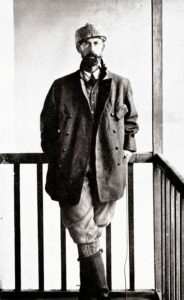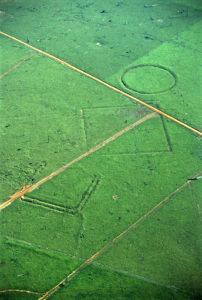
The Lost City of Z is now a movie; you can see the trailer here. The movie’s concept has received a scathing review by John Hemming, who is perhaps the most famous living Amazonian explorer. Hemming’s own book, Red Gold, tells the story how Brazil’s indigenous peoples fought against Portuguese exploitation and conquest over the course of centuries. For Hemming, Fawcett was a dilettante with strange religious ideals, who lost his life due to his own lack of knowledge about the Amazon.
The legend of the Lost City of Z is based upon a document now held in Rio de Janeiro’s national library, which supposedly was written in 1743; the document claims to tell the history of a group of bandeirantes (explorers and slavers) who found a lost city in the interior. As Hemming points out, these men were almost always illiterate, so the fact that such a document exists is surprising in and of itself. It was also the case that other explorers had been working in Amazonia for centuries by the time Fawcett disappeared, with no other discoveries of such a city.
Hemming’s article depicts Fawcett as an incompetent, which he justified based on his own experience: “The old surveyor made two suicidal pronouncements. One was that the trio should travel light, with nothing more than small packs. Everyone in Amazonia knew that you could not cut trails and keep your team fed with fewer than eight men. (I can confirm this, having done months of such cutting and carrying.) But Fawcett sent their pack animals and porters back, and continued with only his two novices.” (Hemming, “The Lost City of Z is a very long way from a true story). Certainly Hemming has as much experience in this area as any person alive. At the same time, some of the online commentators reacting to his article pointed out that Fawcett served in World War One, graduated from Sandhurst, and did have extensive surveying experience in Amazonia. Hemming’s description of Fawcett has little forgiveness. Still, I do think that Hemming has a point that Fawcett’s story has overshadowed the lives of other explorers.
The story of Amazonian exploration is a very long one, but we seldom focus our histories on Jesuit priests, Portuguese scientists, or German explorers (such as Karl Von de Steinen). Hemming stressed this fact at the end of his commentary: “People wishing to learn about the maverick colonel should consult his own fairly modest memoir — not the recent fantasy book and film about him. But I could recommend scores of writings by real explorers.” Even so, I disagree with Hemming’s tone here, and believe that Fawcett’s whole life suggests that he was dedicated to exploration. This is true despite his many failings and racism, and the fact that the mystical ideals of theosophy guided him throughout his life.
Fawcett’s eccentricity and contradictions are doubtless part of the reason why people are fascinated by him. I also believe that Fawcett continues to attract attention because he was British. The list of fascinating and eccentric people who explored the Amazon region is long. Yet very few people outside of Brazil are familiar with the name Curt Nimuendajú, who created a truly astounding map to document the linguistic and cultural richness of Brazil’s indigenous heritage, and later inspired a digital library about the indigenous peoples of Brazil. Of course, there is also the mystery of Fawcett’s disappearance, which has attracted endless speculation and popular interest.

For any academics interested in understanding the origins of the myth of the Lost City of Z, Johnni Langer has an excellent article in Portuguese, “A Cidade Perdida da Bahia: mito e arqueologia no Brasil Império.” As for me, I hope to see “The Lost City of Z” in the theater soon. While many of Hemming’s points are accurate, Fawcett’s complexity is part of what made him a fascinating character. I’m also excited at rumors that an animated Brazilian film is might be made about the life of Curt Nimuendajú, whose own life was perhaps as filled with contradiction, mystery, misery, scandal, sex and discovery. The film-makers are currently looking funding, so you can learn more at the link above.
If you would like to read more about Curt Nimuendajú’s mysterious death, I recommend Elena Welper’s wonderful article from 2016, “From the heroic life to the Erotic diary: on the deaths of Curt Nimuendajú.” Although the article was originally written in Portuguese, there is a button for “automatic translation” on the right. The translation is quite readable.
Shawn Smallman, 2017
